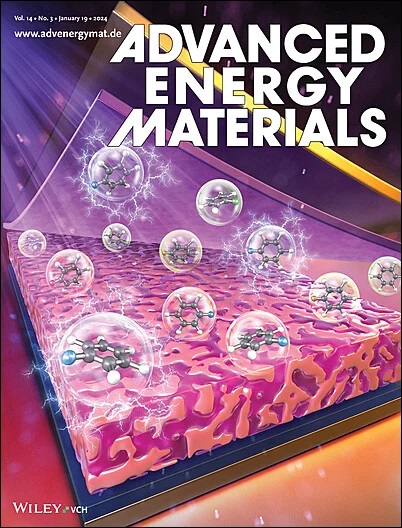Fabric-Based Stretchable and Breathable Backscattered Monitoring System
IF 24.4
1区 材料科学
Q1 CHEMISTRY, PHYSICAL
引用次数: 0
Abstract
The demand for wearable monitoring devices in contemporary medicine has significantly increased, especially in dynamic environments where traditional bulky equipment is impractical. Conventional flexible wearable devices or systems suffer from limited air and moisture permeability, lack of stretchability, and high power consumption, which restrict their long-term usage and comfort. Herein, a stretchable and breathable backscattered monitoring system (SBBMS) is introduced, integrated with a fabric substrate. To address the challenges associated with fabric substrate system fabrication and encapsulation, a printing-cutting-transfer technology is proposed. This method enables the creation of unique, low-cost, high-precision, and robust circuit routing and electronic devices on fabric, maintaining high compatibility with commercial surface mounting technology while minimizing sacrifices in breathability. Additionally, a backscatter communication mechanism is designed and implemented to achieve wireless data transmission, which significantly reduces power consumption. Combined with energy management technology and hydrogel batteries, the SBBMS receives safe, multi-source, and eco-friendly energy support. Furthermore, through meticulous design, all modules—including the antenna, circuit, and battery—are made stretchable, providing the system with excellent strain-resistive performance. The approach paves the way for the development of breathable, high-performance, and highly integrated fabric-based wearable systems, catering to specific user groups such as athletes, soldiers, and pilots.

求助全文
约1分钟内获得全文
求助全文
来源期刊

Advanced Energy Materials
CHEMISTRY, PHYSICAL-ENERGY & FUELS
CiteScore
41.90
自引率
4.00%
发文量
889
审稿时长
1.4 months
期刊介绍:
Established in 2011, Advanced Energy Materials is an international, interdisciplinary, English-language journal that focuses on materials used in energy harvesting, conversion, and storage. It is regarded as a top-quality journal alongside Advanced Materials, Advanced Functional Materials, and Small.
With a 2022 Impact Factor of 27.8, Advanced Energy Materials is considered a prime source for the best energy-related research. The journal covers a wide range of topics in energy-related research, including organic and inorganic photovoltaics, batteries and supercapacitors, fuel cells, hydrogen generation and storage, thermoelectrics, water splitting and photocatalysis, solar fuels and thermosolar power, magnetocalorics, and piezoelectronics.
The readership of Advanced Energy Materials includes materials scientists, chemists, physicists, and engineers in both academia and industry. The journal is indexed in various databases and collections, such as Advanced Technologies & Aerospace Database, FIZ Karlsruhe, INSPEC (IET), Science Citation Index Expanded, Technology Collection, and Web of Science, among others.
 求助内容:
求助内容: 应助结果提醒方式:
应助结果提醒方式:


